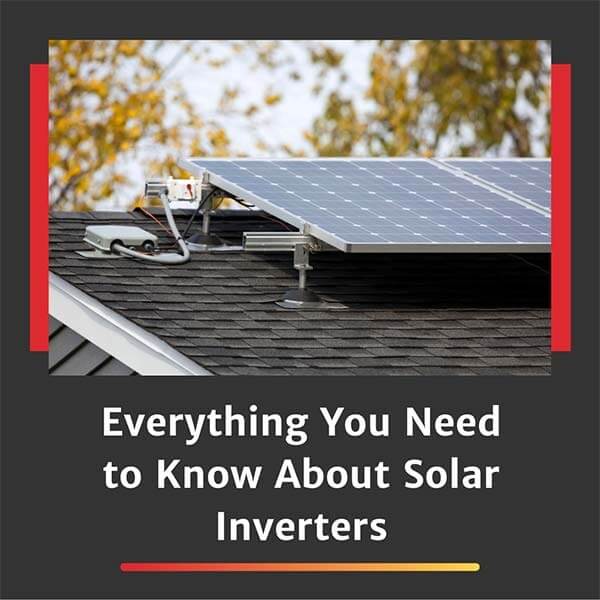Between federal tax credits, local government rebates, and savings on energy costs, solar power is becoming increasingly popular. However, solar power is still new to many people and as a homeowner looking to invest in solar power, you’ll want to learn everything you can about it before you make any purchasing decisions. For example, what, exactly, is a solar inverter and what does it do?
What Is a Solar Inverter?
Solar panels work by absorbing light from the sun to produce energy. However, the energy that the solar panels produce is in the form of a direct current. Typically, homes require alternating current. The solar inverter is a device that converts the direct current output coming from the photovoltaic solar panels to alternating current input to power your home.
Your solar panels won’t provide energy to either your home or to the grid without a solar inverter.
What Do Solar Inverters Do?

The primary purpose of a solar inverter is to convert direct current solar energy into alternating current energy that your home or the grid can use. However, that’s not the only thing that a solar inverter does. In most solar systems, the inverter also monitor and report on power usage and power generation. If you can monitor your solar system via an app, it’s the solar inverter that provides the data to the app.
Some solar inverters can also disconnect your home from the grid if the power goes out. In order to prevent feedback into the grid, solar powered homes also lose power when the grid loses power. More advanced solar inverters can remove your home from its connection to the grid during the outage so that you can still use solar energy during that time.
What Kinds of Solar Inverters Are There?

There are two types of solar inverter:
- String inverters
- Microinverters
What Is a String Inverter?
A string inverter is the older type of solar inverter. For that reason, it’s also less expensive, which is why many homeowners still opt for this type. A string inverter converts solar power via a centralized, easily accessible location.
Benefits of a String Inverter
String inverters are typically cheaper than microinverters. Plus, because it’s a single, centralized panel, the inverter is usually installed somewhere that is easily accessed. This makes maintenance and servicing the inverter a lot easier.
Drawbacks of a String Inverter
Because a string inverter converts solar power to alternating current power in bulk through that centralized location, it can’t separate individual panels. This means that if one solar panel isn’t producing as much energy as the others, either due to being in the shade or because it’s been damaged, then the string inverter will convert less power for all of the solar panels rather than just the one.
What Is a Microinverter?
A microinverter is newer technology. This means that it’s a bit more expensive than the older string inverter technology, but it can also convert power at each of the solar panels rather than from a central source.
Benefits of a Microinverter
Microinverters connect to each individual solar panel. If one is producing less output than the others, perhaps due to being in the shade, that won’t impact the amount of power converted from the other solar panels. Additionally, microinverters typically have longer warranties than string inverters.
Drawbacks of a Microinverter
Microinverters are more expensive than string inverters. Plus, they’re located on the roof with the solar panels, so if they need maintenance, the contractor will have to climb up on the roof.
Which Should I Choose: String Inverter or Microinverter?
To decide between the two, you’ll need to first look at where your solar panels would go. If there will be shade covering one or more of them, then a microinverter may suit your solar system better. If you know that you’ll want easy access to the panel for maintenance, then a string inverter might be better.
If you do go with a string inverter, you can pair it with a power optimizer to achieve the same effect as a microinverter.
What Is a Power Optimizer?
A power optimizer is a device that enables a solar system with a string inverter to produce power separately at each panel rather than as one unit. The power conversion would still happen at the solar inverter, however, so the power optimizer can’t replace the solar inverter. It instead works with a string inverter in order to work more like microinverters but while retaining all the benefits of a string inverter.

